You are using an out of date browser. It may not display this or other websites correctly.
You should upgrade or use an alternative browser.
You should upgrade or use an alternative browser.
Loupe
- Thread starter nkc
- Start date
- Joined
- May 20, 2016
- Messages
- 5,105
For gems, I like this one. Not the absolute top quality, but very good.
https://smile.amazon.com/gp/product/B000EHLU8U/ref=oh_aui_search_detailpage?ie=UTF8&psc=1
https://smile.amazon.com/gp/product/B000EHLU8U/ref=oh_aui_search_detailpage?ie=UTF8&psc=1
- Joined
- Apr 3, 2004
- Messages
- 33,852
LawmaLlama
Shiny_Rock
- Joined
- Apr 19, 2016
- Messages
- 376
- Joined
- Aug 20, 2017
- Messages
- 694
I'm interested in getting one of these too, in order to check the GIA inscription on our diamond when we get it. Has anyone had experience reading the laser inscription with one of these? I've read that it can be somewhat challenging reading it with a 10x loupe, but I guess further magnification would be hard to keep steady?
Gem Queen
Brilliant_Rock
- Joined
- Mar 26, 2008
- Messages
- 553
LawmaLlama
Shiny_Rock
- Joined
- Apr 19, 2016
- Messages
- 376
I can read my inscriptions with my loupe. I find that its easiest to do outside on a clear day under some shade to block direct light. A steady hand helps too.I'm interested in getting one of these too, in order to check the GIA inscription on our diamond when we get it. Has anyone had experience reading the laser inscription with one of these? I've read that it can be somewhat challenging reading it with a 10x loupe, but I guess further magnification would be hard to keep steady?
- Joined
- May 20, 2016
- Messages
- 5,105
LawmaLlama
Shiny_Rock
- Joined
- Apr 19, 2016
- Messages
- 376
That's a good point. The inscriptions on my AVRs are easier to see than on my EC. I can still see both, but the girdle thickness differs.The letter size varies by the girdle thickness.
- Joined
- Jan 1, 2011
- Messages
- 1,391
- Joined
- Aug 20, 2017
- Messages
- 694
I'm considering getting this: https://www.amazon.com/Triplet-Magnifier-High-Quality-Optical-Anti-Reflection/dp/B007JIGEEW
Hopefully the slightly larger magnification will make reading the inscription easier, while not avoiding most of the problems of the even higher powered ones.
Hopefully the slightly larger magnification will make reading the inscription easier, while not avoiding most of the problems of the even higher powered ones.
- Joined
- Jan 2, 2017
- Messages
- 1,851
- Joined
- Jan 15, 2013
- Messages
- 462
- Joined
- May 3, 2001
- Messages
- 7,516
I'm considering getting this: https://www.amazon.com/Triplet-Magnifier-High-Quality-Optical-Anti-Reflection/dp/B007JIGEEW
Hopefully the slightly larger magnification will make reading the inscription easier, while not avoiding most of the problems of the even higher powered ones.
I will offer the comment that most inexperienced users of loupes will have a very hard time to see and read an inscription only at 10X. I do not think that 12 X will make that big of a difference. It has been my experience that most will need at least 20X and 30X is better for reading an inscription. If the dark coloration has been steamed or ultrasoniced out of the inscription, it can be extremely hard to find with a loupe, let alone to read.
As for holding the loupe steady with a 3rd hand, I loved that comment by the way, the trick is to use your thumb knuckle against your cheek to hold the loupe steady, and then make a finger bridge between the hand with the loupe and the hand holding the diamond to keep the diamond steady in the loupe for viewing.
I made a short video on how to use a loupe some years ago. I believe that I am allowed to link to it in answering a question, but if not, I would ask the moderator to kindly remove the link. This video should make it clear on how to properly hold and use the loupe to its best effect.
Wink
- Joined
- Jan 2, 2017
- Messages
- 1,851
- Joined
- May 3, 2001
- Messages
- 7,516
- Joined
- May 20, 2016
- Messages
- 5,105
Great video and exactly what I do with 10x and 15x.I will offer the comment that most inexperienced users of loupes will have a very hard time to see and read an inscription only at 10X. I do not think that 12 X will make that big of a difference. It has been my experience that most will need at least 20X and 30X is better for reading an inscription. If the dark coloration has been steamed or ultrasoniced out of the inscription, it can be extremely hard to find with a loupe, let alone to read.
As for holding the loupe steady with a 3rd hand, I loved that comment by the way, the trick is to use your thumb knuckle against your cheek to hold the loupe steady, and then make a finger bridge between the hand with the loupe and the hand holding the diamond to keep the diamond steady in the loupe for viewing.
I made a short video on how to use a loupe some years ago. I believe that I am allowed to link to it in answering a question, but if not, I would ask the moderator to kindly remove the link. This video should make it clear on how to properly hold and use the loupe to its best effect.
Wink
I've not actually used a third-hand for diamonds, but it is what I used to do when I ran field labs and need to show others how to identify plants (tiny frigging seeds) or insects (tiny frigging mouthparts and legs) and I need to point to the 3rd spine on the 4th leg with a pointer tool and aim the flashlight too. Way easier in a lab with a scope, but 'needs must' in the field. {oddly, loupe's are called 'hand lens' among field scientists}
Maybe there are folks out there that can do the bridge with a 40x, but I just can't keep my hands/face/breathing steady enough see anything. Its hard enough with 20x binoculars when you can brace your whole body. I bow to anyone that can manage that with 40x skill.
- Joined
- Aug 20, 2017
- Messages
- 694
I will offer the comment that most inexperienced users of loupes will have a very hard time to see and read an inscription only at 10X. I do not think that 12 X will make that big of a difference. It has been my experience that most will need at least 20X and 30X is better for reading an inscription. If the dark coloration has been steamed or ultrasoniced out of the inscription, it can be extremely hard to find with a loupe, let alone to read.
As for holding the loupe steady with a 3rd hand, I loved that comment by the way, the trick is to use your thumb knuckle against your cheek to hold the loupe steady, and then make a finger bridge between the hand with the loupe and the hand holding the diamond to keep the diamond steady in the loupe for viewing.
I made a short video on how to use a loupe some years ago. I believe that I am allowed to link to it in answering a question, but if not, I would ask the moderator to kindly remove the link. This video should make it clear on how to properly hold and use the loupe to its best effect.
Wink
Thanks Wink. The reason I'm wary of higher magnifications is that I read that the shallow field of view and the need for more light can be a challenge.
Does anyone know of any apparatuses that would hold the ring and loupe in place to alleviate this issue?
Also has anyone used a microscope instead?
- Joined
- May 3, 2001
- Messages
- 7,516
HDer,
I have been using loupes since 1971. Let me tell you, I ALWAYS use a scope for looking for and at inscriptions. ALWAYS.
When my staff checks in a newly arriving diamond, the first thing they do is sit at the microscope and verify the inscription on the diamond, then take it to the scale to verify the weight as well. It is also the last two things that they do to a diamond that is being shipped out to a client if it has been purchased as a loose diamond. If we are making the mounting, it is the last thing done before we give the diamond to our Workshop foreman.
I do know a very few who I would trust to read an inscription with a 10X loupe, Paul Slegers and Lieve Peeters being two of them.
Of course, a really great loupe is fairly inexpensive. A moderately good microscope is expensive, and a really great one, is worth every extra thousand paid for it, but far out of reach for the average private who wants to look at inscriptions.
Still, if you have access, you will be much happier and confident with it than most will ever be with a loupe.
Wink
I have been using loupes since 1971. Let me tell you, I ALWAYS use a scope for looking for and at inscriptions. ALWAYS.
When my staff checks in a newly arriving diamond, the first thing they do is sit at the microscope and verify the inscription on the diamond, then take it to the scale to verify the weight as well. It is also the last two things that they do to a diamond that is being shipped out to a client if it has been purchased as a loose diamond. If we are making the mounting, it is the last thing done before we give the diamond to our Workshop foreman.
I do know a very few who I would trust to read an inscription with a 10X loupe, Paul Slegers and Lieve Peeters being two of them.
Of course, a really great loupe is fairly inexpensive. A moderately good microscope is expensive, and a really great one, is worth every extra thousand paid for it, but far out of reach for the average private who wants to look at inscriptions.
Still, if you have access, you will be much happier and confident with it than most will ever be with a loupe.
Wink
- Joined
- Aug 4, 2008
- Messages
- 15,799
another option is the Nikon
https://www.amazon.com/Nikon-jewelry-appraisal-Loupe-10X/dp/B000RQBS9Y/
It can hold its own with loupes that cost much much more.
The downside is the small size.
https://www.amazon.com/Nikon-jewelry-appraisal-Loupe-10X/dp/B000RQBS9Y/
It can hold its own with loupes that cost much much more.
The downside is the small size.
- Joined
- Aug 4, 2008
- Messages
- 15,799
Another well known professional on PS turned me on to these:
https://www.amazon.com/10x21mm-Illuminated-Jewelers-Magnifying-Magnifier/dp/B00CUO9168/
For field work they are very good.
The optics are not in the nikon class but aren't horrible either.
It is probably my most used loupe.
https://www.amazon.com/10x21mm-Illuminated-Jewelers-Magnifying-Magnifier/dp/B00CUO9168/
For field work they are very good.
The optics are not in the nikon class but aren't horrible either.
It is probably my most used loupe.
- Joined
- Aug 4, 2008
- Messages
- 15,799
I'm am interested in this BelOMO 20x for inscriptions.
I get a kick out of the negative reviews, the problems they note are all a result of 20x in a loupe. Needs a lot of light, distance is critical and the sweet spot is small.
https://www.amazon.com/BelOMO-Quadruplet-Magnifier-High-Quality-Anti-Reflection/dp/B00JB2NQF4
I get a kick out of the negative reviews, the problems they note are all a result of 20x in a loupe. Needs a lot of light, distance is critical and the sweet spot is small.
https://www.amazon.com/BelOMO-Quadruplet-Magnifier-High-Quality-Anti-Reflection/dp/B00JB2NQF4
- Joined
- Aug 4, 2008
- Messages
- 15,799
I do have one of these silly things and have read an inscription with one.
The large end is around 6x and the small end is around 15x
I paid something like $3.00 for it years ago.
https://www.amazon.com/SE-MJ368212-Power-Jewelers-Loupe/dp/B0016J73B8
The large end is around 6x and the small end is around 15x
I paid something like $3.00 for it years ago.
https://www.amazon.com/SE-MJ368212-Power-Jewelers-Loupe/dp/B0016J73B8
- Joined
- Aug 4, 2008
- Messages
- 15,799
- Joined
- Apr 3, 2004
- Messages
- 33,852
- Joined
- Aug 20, 2017
- Messages
- 694
Not to totally hijack this thread, but what about something like this?
http://www.amscope.com/40x-1000x-biological-science-student-compound-microscope.html
Also, besides portability, is there any reason to get a loupe over a microscope?
http://www.amscope.com/40x-1000x-biological-science-student-compound-microscope.html
Also, besides portability, is there any reason to get a loupe over a microscope?
- Joined
- Apr 3, 2004
- Messages
- 33,852
I just use it to read the inscriptions. I put my ring on top of a slide and I can easily read the inscriptions under 40X.Not to totally hijack this thread, but what about something like this?
http://www.amscope.com/40x-1000x-biological-science-student-compound-microscope.html
Also, besides portability, is there any reason to get a loupe over a microscope?
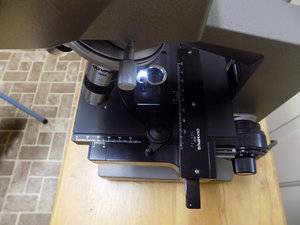
- Joined
- May 20, 2016
- Messages
- 5,105
Not to totally hijack this thread, but what about something like this?
http://www.amscope.com/40x-1000x-biological-science-student-compound-microscope.html
Also, besides portability, is there any reason to get a loupe over a microscope?
Thanks Wink. The reason I'm wary of higher magnifications is that I read that the shallow field of view and the need for more light can be a challenge.
Does anyone know of any apparatuses that would hold the ring and loupe in place to alleviate this issue?
Also has anyone used a microscope instead?
I use a compound microscope on a dissection base at work, a Leica Wild M3Z with fiberoptic lights so you don't get burned every 10 seconds. With a compound head on a traditional base, like the one you linked, you have a very shallow area of focus between the subject and the lens (which is why so many slide covers get cracked by students). After you use such a scope enough, you get used to it and many expensive models have a stop that you can set to avoid contact between the objective and the subject. With a setup like my work scope, you can use a third hand setup to hold the gem (as this does not have a gem arm attachment point).
This is a better choice with gem work, it is only missing the gem holder. Optics are ok (not great), but probaby a much better starter scope. You still need an external light source to make it easiest to use. Others may have additional recommendations.
https://www.amazon.com/AmScope-SE305R-PZ-Microscope-Magnification-Objectives/dp/B004SQQCHC
Why are loupes popular? IDK. They are small, compact, easy to carry and can be used more subtly than a scope. They also can be moved into better light without carrying a huge scope around.
Attachments
- Joined
- Aug 20, 2017
- Messages
- 694
Thanks for the suggestion @rockysalamander.
I do remember breaking my fair share of slides so you're right that setup might not be so ideal.
My dilemma is $140 is a bit steep for something I'm probably going to use seriously one time (to read the inscription) and then just keep around the house to play around with from time to time or have kids play around with.
So if a loupe is too hard to use for this purpose and a microscope is too expensive, then maybe I should just take it to a jeweler? Was thinking I wanted to go to the SF Crafted By Infinity dealer to see what kind of difference CBI makes, so maybe I can have them check it out there? That should cost what? 20/40 dollars? Kind of backwards I guess since normally people recommend checking the inscription after getting the ring FROM a dealer.
I do remember breaking my fair share of slides so you're right that setup might not be so ideal.
My dilemma is $140 is a bit steep for something I'm probably going to use seriously one time (to read the inscription) and then just keep around the house to play around with from time to time or have kids play around with.
So if a loupe is too hard to use for this purpose and a microscope is too expensive, then maybe I should just take it to a jeweler? Was thinking I wanted to go to the SF Crafted By Infinity dealer to see what kind of difference CBI makes, so maybe I can have them check it out there? That should cost what? 20/40 dollars? Kind of backwards I guess since normally people recommend checking the inscription after getting the ring FROM a dealer.
Share:
How Are Diamonds Made? Natural vs Lab-Created Explained How Are Diamonds Made? Natural vs Lab-Created Explained - 08/05
How Are Diamonds Made? Natural vs Lab-Created Explained - 08/05

Top Wedding Ring Brands for Every Style and Budget
Top Wedding Ring Brands for Every Style and Budget - 08/05
Where to Buy Lab Grown Diamonds: Best Places Compared
Where to Buy Lab Grown Diamonds: Best Places Compared - 08/05





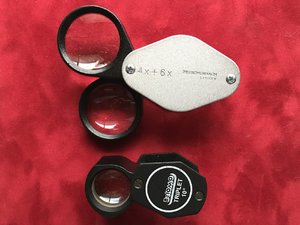
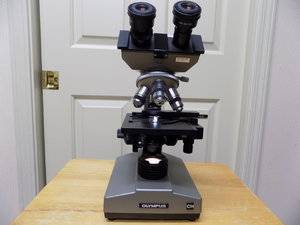
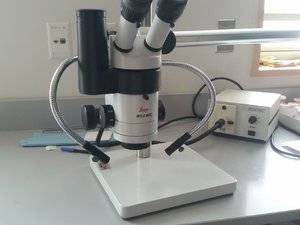
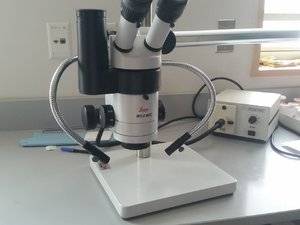
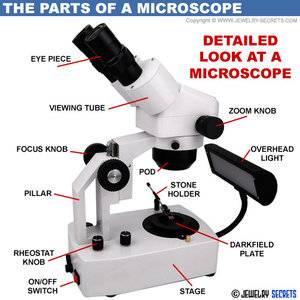

300x240.png)